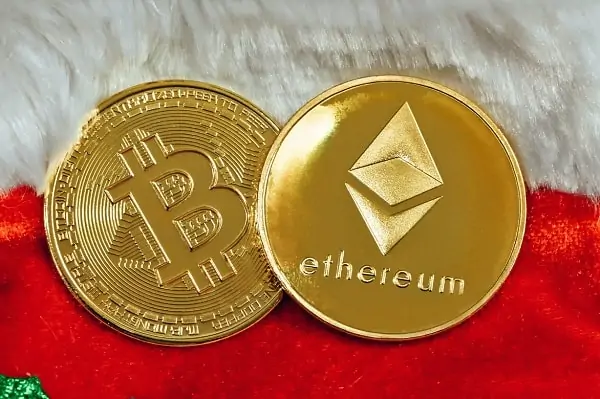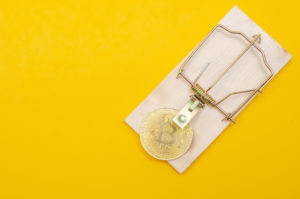Special to the Findependence Hub
We are hybrid investors – we invest in individual dividend growth stocks and index ETFs. As of writing, we own 50-something dividend stocks and 1 ETF. We are doing a hybrid investing approach to capture the best of both investing strategies.
We invest in dividend paying stocks so we can collect stable and predictable income every month. It means we can live off dividends if we wanted to and not touch the principal. This, in theory, should give us more flexibility and increase the margin of safety when we are financially independent and not earning a steady paycheque every two weeks. Dividend income is also very tax efficient compared to employment income, especially if you construct your portfolio correctly, like holding REITs and income trusts inside of your TFSA and only Canadian stocks that pay eligible dividends in your non-registered accounts.
Index ETF investing provides asset and geographical diversification that we may not be able to obtain easily through holding individual dividend stocks. By holding an international ex-Canada ETF like XAW, we are able to easily tap into international markets like the US, Japan, China, UK, Taiwan, etc.
Some people may argue that capital gain is even more tax efficient than dividend income, but that’s a post for another day…
Ideally, I’d like our dividend stocks to index ETF allocation to be about 65/35 and we are slowly making our way to this ideal breakdown.
For us, dividends stocks and index ETFs are considered as our core investments and constitute about 95% of our overall investment portfolio. The other 5% is what I call the play investment portfolio.
Our play investment portfolio
The play investment portfolio is used primarily for growth stocks, active ETFs that do not pay dividends, or more speculative stocks. By allocating less than 5% of our portfolio to these stocks, we limit our exposure to these highly volatile stocks and ETFs.
I haven’t written too much about our play investment portfolio in the past. In this portfolio, we hold stocks like Tesla, Facebook, Alphabet, the ARK funds, small-cap growth stocks, etc. Some have done extremely well but some have not done so well.

Now, some of you may read this and wonder, why don’t I invest in things like bonds, precious metals, cryptos, etc in our play investment portfolio.
Why I don’t invest in bonds
Why don’t I invest in bonds? First of all, because Mrs. T and I are still relatively young. We are only “moving up” from our late 30’s to early 40’s in 2022. So we focus on stocks because stocks have higher historical returns than bonds.
Second, interest rates have been at historically low levels. I don’t believe the rates are going to stay this low forever. Given the recent higher than expected inflation rates, it makes sense for central banks around the world to increase interest rates.
Bond prices have an inverse relationship to interest rates. When interest rates go down, bond prices go up; when interest rates go up, bond prices go down. This concept used to confuse me when I was taking ECON 101 in university but it makes a lot of sense if you consider the following scenario:
Say the current interest rate is 1% and you can purchase a 5-year bond that yields 2%. When you buy $5,000 worth of bonds, you get $50 each year for the next 5 years. Now, imagine the Bank of Canada decides to raise interest rates from 1% to 2% to dampen inflation. The new 5-year bonds now yield 3%. Because people can buy “new” bonds that yield at a higher rate, your “old” 5-year bond that yields 2% isn’t worth as much. The only way for someone to take the old bond off your hands is if you sell it at a cheaper price. This is the reason behind the inverse relationship between bond prices and interest rates.
I also don’t believe the old rule of thumb that you should own the same percentage in bonds as your age. That theory was developed years ago when interest rates were much higher. In today’s low interest rate environment, I believe that rule needs to be modified.
Currently, we hold less than 1% of bonds in my work RRSP. These bond funds were purchased many years ago before I really started the DIY investing approach. Since these funds are in my “employer portion,” I can’t touch them, unfortunately. In case you’re wondering, I have changed my work RRSP’s investment instructions many years ago so I no longer purchase any bond funds.
Why I don’t invest in precious metals
Precious metals offer unique inflationary protection because they have intrinsic value and therefore have a low or negative correlation to stocks and bonds. So why don’t I invest in precious metals?
Three words – circle of competence.
My circle of competence lies in stocks. I know how to analyze and evaluate stocks and I know how to read charts. I like to be the owner of companies that produce products that I rely on. The more dependent I and other people who rely on these products are, the more likely I am to invest in these companies.
When it comes to precious metals like gold, silver, and platinum, I simply don’t understand them.
Prices for precious metals can go up and down quickly due to technical imbalances. Although prices for precious metals can be somewhat speculative, for the most part, the prices are mostly determined by demands and futures contracts.
I can’t predict demands and future contracts; I don’t have investment knowledge and expertise in precious metals.
So the best approach for me is to stay far away from precious metals.
However, if you know precious metals well, then it may make sense to invest in precious metals as another diversification method and to hedge against inflation.
Why I don’t invest in penny stocks
Years ago I traded penny stock occasionally based on technical and trend analysis but found penny stocks to be completely speculative and required a lot of time.
Trading penny stocks was like riding roller coasters, there were a lot of sudden ups and downs and emotionally it was difficult to handle. In the end, I gave up on penny stocks because I was having more losing trades than winning trades. It was simply not worth my time and effort.
Why I don’t invest in cryptocurrencies
Unlike many investors, we currently have no money invested in cryptocurrencies. We don’t own any Bitcoins, Ethereum, Litecoin, or Dogecoin. Having said that, I do believe blockchain is a revolutionary technology that will improve the speed of digital transactions without compromising security.

Why don’t I invest in cryptocurrencies? Because I think these cryptocurrencies are highly speculative. In fact, some of these “coins” were created as jokes. How can I put my hard-earned money behind a joke or a concept?
Sorry, I simply can’t.
In addition, I believe the real-world utility of these cryptocurrencies is minimal. You can buy and sell goods using cryptocurrencies like Bitcoin. But given Bitcoin’s price is so volatile, it is extremely difficult to decide how much Bitcoin an item will cost. Because of the price volatility, I do not believe cryptocurrencies will be widely adopted.
Most of the time, the prices are purely based on hype, for example, Dogecoin surged 60% after Elon Musk tweeted about Dogecoin. Thanks to regulations and the efficiency of the stock market, it is much more difficult to manipulate stock prices (it can still be done but much harder than a tweet from a celebrity CEO).
Have people made money investing in cryptocurrencies? Sure there are a lot of people that have 10 times or even higher returns investing Bitcoins or other cryptocurrencies. But some people also lost money investing in cryptocurrencies.
I’ll be perfectly honest, I have considered investing in one or two cryptocurrencies like Bitcoin and Ethereum with a small amount of money in our play investment portfolio. But every time I considered doing that, I kept reminding myself it would be like going to the casino and putting all my money on black. The potential payoff is huge but the potential loss is huge too. In many ways, cryptocurrencies remind me a lot of the cannabis hype we saw just before the legalization in Canada.
For now, I am comfortable sitting on the sideline and watching from afar.
Know what you’re investing in. Know yourself.
When it comes to investing, I think the key is to know and understand what you’re investing in. Can you explain it to a 5-year-old? If you can’t, then you may want to consider investing in something else.
Know what kind of investor you are yourself. It is important to have a core staple investment strategy, whether it be dividend growth investing, index investing, real estate investing, or somewhere in between. It is important to stay with this core investment strategy, rather than switching back and forth between strategies.
Most importantly, we need to remember that personal finance is personal. Just because someone is investing in something different than what you are investing in, it doesn’t make them wrong. Be willing to learn about new investing ideas. Be open.
There are many ways to invest your money. You can pick and choose different kinds of investments. By knowing yourself as an investor, you can decide on the types of investments that suit you the best. This is the beauty of investing.
And always remember to ask yourself the three most important questions before investing!
Happy investing everyone.
 This blog originally appeared on the Tawcan site on July 4, 20202 and is republished on the Hub with the permission of Bob Lai. Hi there, I’m Bob from Vancouver Canada. My wife & I started dividend investing in 2011 with the dream of living off dividends in our 40’s. Today our portfolio generates over $2,700 in dividends per month.
This blog originally appeared on the Tawcan site on July 4, 20202 and is republished on the Hub with the permission of Bob Lai. Hi there, I’m Bob from Vancouver Canada. My wife & I started dividend investing in 2011 with the dream of living off dividends in our 40’s. Today our portfolio generates over $2,700 in dividends per month.



